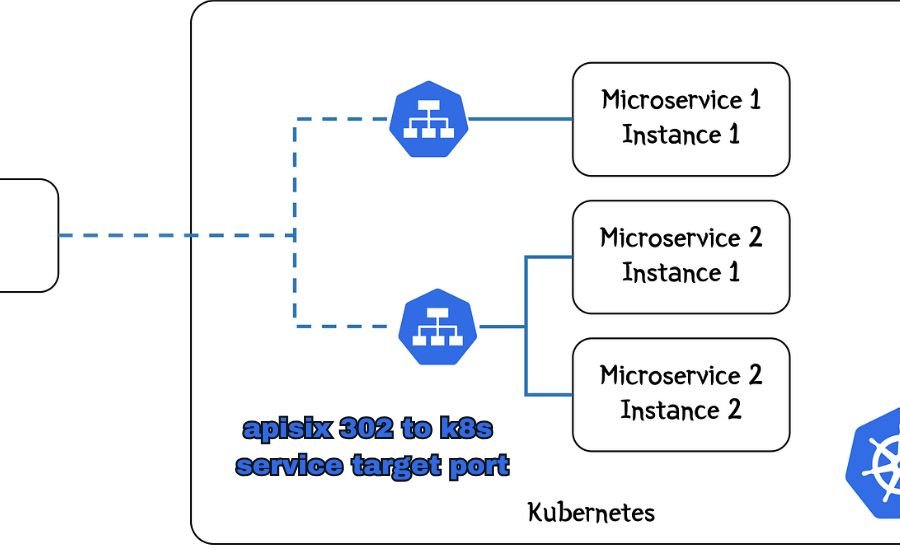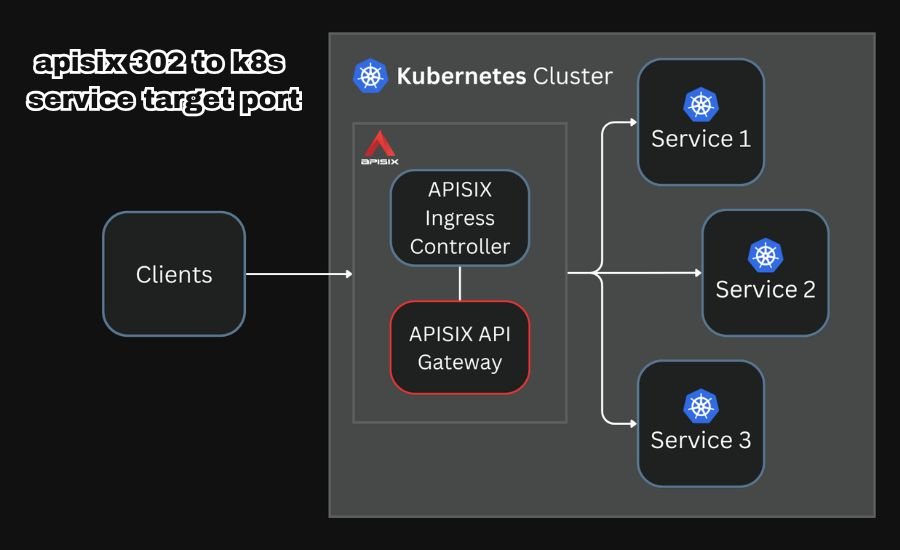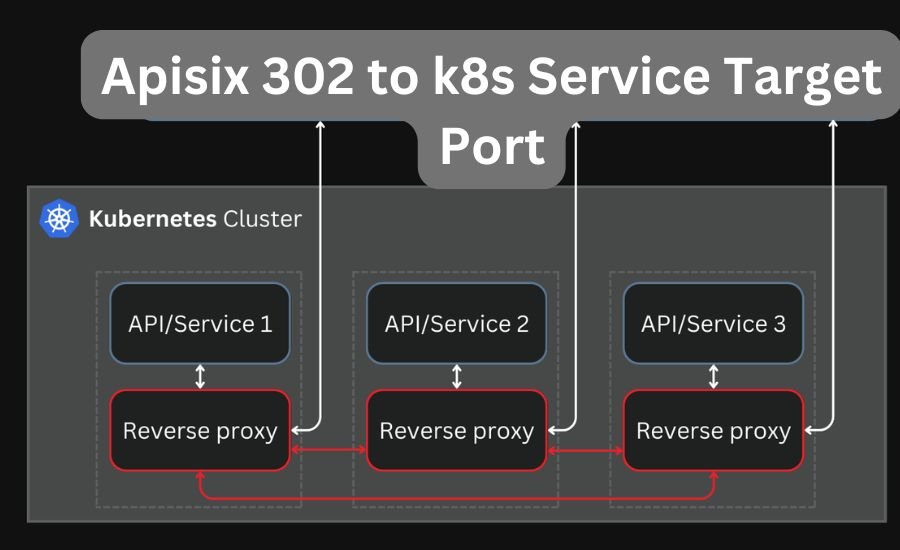If you’re working with APISIX 302 to K8s service target port, you’re probably aiming to connect your API gateway to specific ports within Kubernetes services. This process can seem tricky, but it doesn’t have to be! Let’s break down the steps to make your configuration smooth and easy.
In this guide, we’ll explore how APISIX 302 to K8s service target port works and why it’s helpful. We’ll cover how APISIX uses the 302 redirection to send traffic to the right port inside a Kubernetes cluster. So, let’s dive into some simple steps to get you started!
What Does APISIX 302 to K8s Service Target Port Mean?
APISIX 302 to K8s service target port refers to a process where the apisix 302 to k8s service target port gateway redirects traffic to a specific Kubernetes (K8s) service port using a 302 redirect. This technique helps manage requests more effectively, sending traffic to the correct port in a Kubernetes setup. For beginners, understanding this process can make handling APIs easier.
In Kubernetes, services communicate through assigned ports, and APISIX can send users to these ports through a redirection. When we say “302,” we’re talking about a temporary redirect, which tells the browser or application to look for the service on a different port. This is useful when you want requests managed flexibly without changing the main setup.
By configuring APISIX to send traffic to a specific target port in K8s, you create a more organized and reliable traffic flow. This setup keeps the system efficient and helps manage the demand on each service port.
Why Use APISIX 302 for Redirecting to a Kubernetes Service Port?

Using apisix 302 to k8s service target port for redirection to a K8s service target port can improve flexibility and control. In complex environments like Kubernetes, services might change or move, so a temporary redirect (302) helps users find the service at its new port. This can prevent service interruptions and keep traffic moving smoothly.
Another reason for using a apisix 302 to k8s service target port is that it helps manage high traffic loads by distributing requests across multiple ports. When APISIX handles this, it reduces the chances of bottlenecks and lets your setup handle more users without lag.
Redirects like APISIX 302 are also valuable because they allow developers to test new setups without fully switching over. This keeps the original service in place while traffic is temporarily directed to a new port, offering a safer way to experiment with changes.
Setting Up APISIX 302 Redirection to K8s Service Target Port
Setting up APISIX 302 redirection to K8s service target port requires some configuration steps. First, in APISIX, you create a rule that tells it to redirect incoming traffic with a 302 status. This rule includes details about the target port in your Kubernetes service, so the requests go where they should.
The setup also involves linking your APISIX gateway to Kubernetes services. This lets APISIX recognize where to send requests in the cluster. Make sure the target port is open and accepting requests to avoid errors.
By configuring this correctly, your APISIX gateway will smoothly handle traffic redirections. This can help users reach the right service location with less delay, improving your application’s overall response time.
How to Configure Target Ports in K8s for APISIX 302 Redirection
Configuring target ports in Kubernetes for apisix 302 to k8s service target port redirection is crucial for effective traffic management. Start by setting up your Kubernetes service with a specific target port. This target port acts as the endpoint where APISIX will redirect incoming traffic.
Once you have the port ready, you’ll need to configure APISIX to recognize this port as the redirection target. This involves creating a configuration rule in APISIX that uses a 302 redirect to the chosen port, ensuring smooth traffic flow.
Make sure to check the configuration to avoid any conflicts. Sometimes, a wrong port or misconfigured rule can lead to errors, so double-checking helps keep everything running smoothly.
Step-by-Step: Linking APISIX 302 to Your K8s Service Target Port
Linking APISIX 302 to a K8s service target port can be straightforward if done step-by-step. Start by identifying the service and the target port you want to redirect traffic to in Kubernetes. This is where your APISIX configuration will send requests.
Next, in APISIX, set up a rule that issues a 302 redirect. This rule should include details of the target port so traffic knows exactly where to go. Once configured, test the setup by sending a request and checking if it redirects correctly.
Finally, make adjustments if needed to ensure smooth traffic flow. With a few simple steps, you can easily connect APISIX to the right port in your Kubernetes service, making your API requests more efficient.
Understanding 302 Redirects in APISIX for Kubernetes Services

A apisix 302 to k8s service target port in APISIX for Kubernetes services is like giving directions. When APISIX issues a 302, it tells users to look for the service on a different port temporarily. This can help in cases where services move or need adjustments.
Using a 302 redirect keeps your original setup intact, as the redirect is only temporary. This flexibility is useful in a Kubernetes environment where changes can happen frequently. It keeps things running smoothly without changing the main configuration.
By using APISIX to manage these redirects, your Kubernetes services remain easy to access, reducing confusion for users and keeping response times fast.
Common Issues with APISIX 302 to K8s Service Target Port and Fixes
Setting up APISIX 302 to K8s service target port can have some issues. One common problem is incorrect port configuration, where APISIX redirects to the wrong port. Checking and double-checking port settings can prevent this.
Another issue could be network delays if the redirect takes too long. Optimizing network settings and ensuring the target port is available can improve speed. APISIX can also have problems if permissions aren’t set correctly, so ensure all access rights are in place.
By keeping an eye on these common issues, you can ensure smooth redirects, reducing errors and keeping your service running well.
Best Practices for Using APISIX 302 with Kubernetes Target Ports
Using apisix 302 to k8s service target port with Kubernetes target ports works best when you follow a few best practices. First, always test redirects in a development environment before applying them in production. This can help catch any issues early on.
Documentation is also key. Keep a record of each target port and its redirect rules in APISIX, which can simplify troubleshooting if a problem arises. Testing periodically helps catch any configuration drift, where settings change unintentionally.
Using these best practices ensures APISIX 302 redirects to K8s target ports stay reliable, making your system more efficient.
Using APISIX to Redirect to K8s Service Target Port Securely
Redirecting traffic securely with APISIX 302 to K8s service target port is crucial. Use secure protocols like HTTPS to protect data as it moves through the redirect. APISIX lets you enable security measures, so always make use of these.
Another key point is to set up proper access control in Kubernetes, ensuring only authorized requests reach the target port. This step helps prevent unauthorized access and keeps your data safe.
Following security steps ensures your APISIX 302 redirects work effectively and safely, giving users a secure experience.
You Must Read: 5980-27-3726-71
Quick Tips for Setting APISIX 302 to K8s Service Target Port

Setting up APISIX 302 to K8s service target port can be easier with a few quick tips. Start by checking if the target port is ready to receive traffic; this can save you troubleshooting time later.
Make sure to test the redirect process after setup to confirm it’s working as expected. If you notice delays, adjusting network settings can help speed things up. apisix 302 to k8s service target port APISIX and Kubernetes documentation handy also aids in solving issues quickly. Following these tips makes configuring APISIX 302 redirects to K8s ports faster and more reliable.
Exploring How APISIX Handles 302 Redirects to Kubernetes Services
APISIX handles 302 redirects to Kubernetes services efficiently by using well-defined configuration rules. Each rule tells APISIX where to send traffic, ensuring it reaches the correct target port. This can make your system highly adaptable to changes in traffic.
APISIX’s flexibility allows for multiple redirects based on need, which is helpful in a Kubernetes environment where service locations may change. Using APISIX as a gateway also makes traffic management simpler, as it centralizes control over service access. By handling 302 redirects this way, APISIX keeps the flow of requests smooth and the user experience positive.
A Beginner’s Guide to APISIX 302 Redirects and K8s Service Target Ports
For beginners, APISIX 302 redirects and K8s service target ports can sound complex. Simply put, APISIX acts like a guide, directing users to the correct port in Kubernetes. This helps users find services without delay, even when setups change.
Setting up APISIX to handle these redirects involves configuring rules for each target port, making sure traffic reaches the intended destination. Testing each setup is important to catch any issues early on.
With a little practice, using APISIX 302 redirects to K8s target ports can become an easy way to manage traffic in your Kubernetes environment.
Conclusion
Setting up APISIX 302 to K8s service target port may seem a bit technical, but with the right steps, it’s very doable. By using APISIX to direct traffic, you can make sure requests reach the correct service port in Kubernetes quickly and efficiently. This makes handling high traffic smoother and keeps everything organized.
As we’ve seen, APISIX 302 redirects are not only helpful but also offer flexibility. This setup lets you test changes, manage traffic better, and keep your services secure. With a little practice, anyone can manage these redirects and make their system faster and more reliable!
Read More: T202315303ygj
FAQs
Q: What is APISIX 302 to K8s service target port?
A: APISIX 302 to K8s service target port is a way to send traffic to a specific port in Kubernetes using a temporary (302) redirect.
Q: Why use a 302 redirect in APISIX?
A: A 302 redirect in APISIX is useful for temporarily guiding traffic to a different port, making it easy to manage and test changes.
Q: How do I configure APISIX for a K8s target port?
A: You can configure APISIX by setting up a rule that redirects traffic to your chosen K8s service port.
Q: Can I secure APISIX 302 redirects?
A: Yes, using HTTPS and proper access controls keeps APISIX 302 redirects secure and data safe.
Q: What common issues occur with APISIX 302 redirects?
A: Common issues include wrong port setup and slow redirects, but checking configurations can fix these easily.
Q: How do I test APISIX 302 to K8s redirection?
A: After setting it up, send a request to check if it reaches the correct K8s port as expected.
Q: Is APISIX 302 redirect good for high traffic?
A: Yes, it helps manage traffic loads by directing requests to specific ports, keeping services running smoothly.
